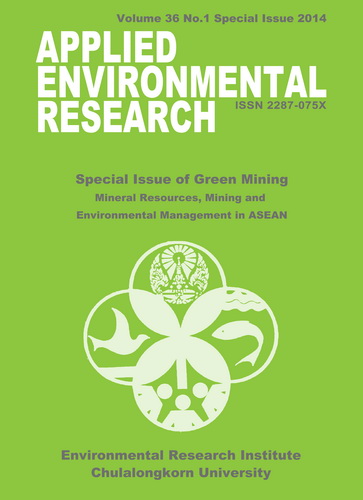Environmental Management and Monitoring of Mining Operation in Lao PDR
Main Article Content
Abstract
Overall, mining projects make a significant contribution to gross of domestic product (GDP) in Lao People’s Democratic Republic (Lao PDR). Benefits include increased export revenues, provision of royalty and tax income to the government, technology transfer, worker training and the creation of a skilled workforce. This can also lead to improved social, physical, legal and financial infrastructure due to development around the mining areas such as roads, electricity and water distribution. Managed properly, economic benefits from mining projects can benefit future generations, even after operations have ceased. For Lao PDR, rapid expansion of the mining sector is seen as vital to economic development. In the National Socio-Economic Development Plan, mining was prioritized as a key sector to help Lao PDR achieve its goal to graduate from its status as least developed country by 2020. Government revenues from mining projects are a major contributor to the country’s National Growth and Poverty Eradication Strategy. Environmental management and monitoring of the operations of mining projects are essential in order to identify and mitigate potential negative environmental impacts. Such impacts may be minimized through the use of mining industry best practice as well as compliance with Government of Laos (GoL) and international environmental standards and regulations. The environmental management and monitoring process first identifies and quantifies potential impacts of a mine’s operation on land, water, atmospheric and biological resources, as well as on human settlements. Secondly, measures are proposed to avoid or mitigate identified adverse impacts, including a specific requirement for a mine closure and rehabilitation plan.
Article Details

This work is licensed under a Creative Commons Attribution-NonCommercial 4.0 International License.
Published articles are under the copyright of the Applied Environmental Research effective when the article is accepted for publication thus granting Applied Environmental Research all rights for the work so that both parties may be protected from the consequences of unauthorized use. Partially or totally publication of an article elsewhere is possible only after the consent from the editors.
